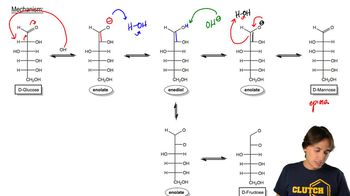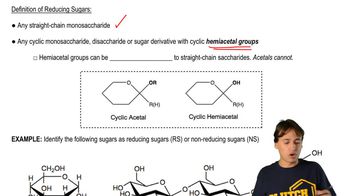What product or products are obtained when D-galactose reacts with each of the following?
c. NaBH4, followed by H3O+
 Verified step by step guidance
Verified step by step guidance Verified video answer for a similar problem:
Verified video answer for a similar problem:



 7:19m
7:19mMaster Monosaccharides - Reduction (Alditols) with a bite sized video explanation from Johnny
Start learning